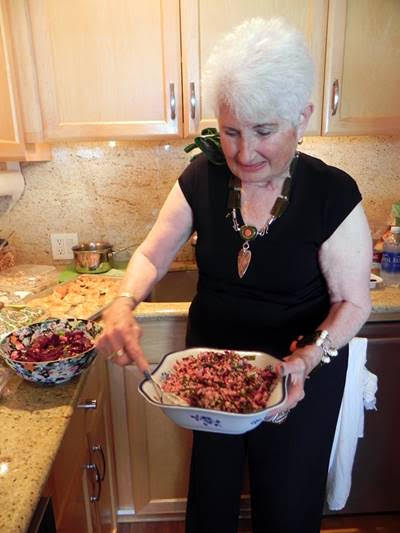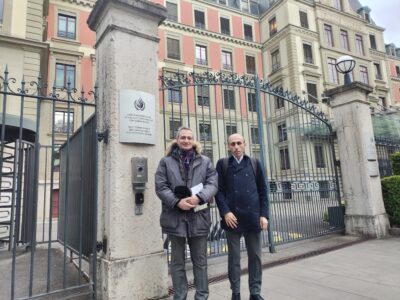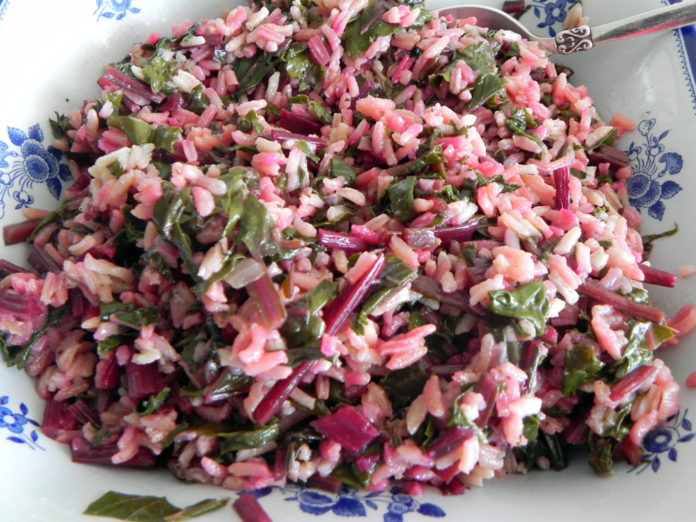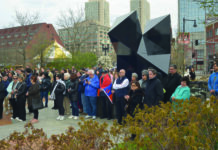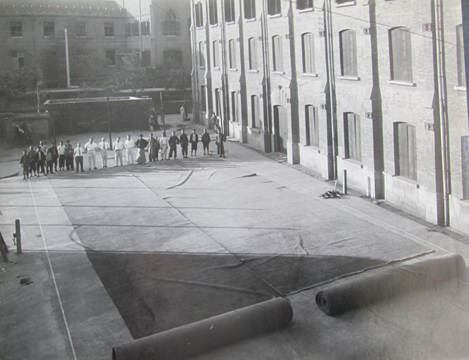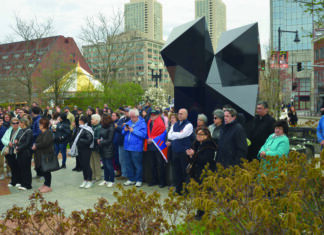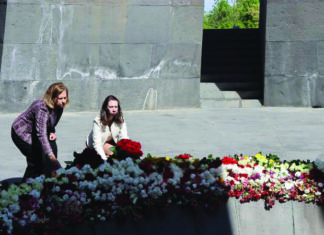SAN FRANCISCO — Elise Kazanjian is a member of the Wednesday Women Writers in San Francisco, a group of writers who have been meeting for over a decade. From September through November, many Bay Area Armenian churches present fall bazaars and festivals, featuring a dazzling variety of Armenian foods and desserts, the result of months of dedicated effort and capacious freezer space in homes across the area. She is also a member of St. John’s Armenian Apostolic Church in San Francisco. She prepared traditional dishes, including her family’s Armenian Beet Leaves with Rice recipe at a sumptuous multi-course dinner event for KQED News in 2013, celebrating “Food & Spirituality: Fall Feast with Armenians in San Francisco.”
A poet/writer, Elise grew up in Tientsin (now Tianjin), China, where her father managed an Armenian rug factory. She worked at Sunset Magazine, at CCTV in Beijing, China, for August Coppola’s Audio Vision Project at San Francisco State University, and has been a pawnbroker. Her poems/essays have appeared in Fog And Light, San Francisco Through The Eyes of the Poets Who Live Here. (Elise was honored to be in this anthology, which begins with a poem by the great poet Lawrence Ferlinghetti.) Other publications include: Poets Eleven, New Millennium Writings, A Kind of Hurricane Press, and SF Chronicle and the Marin Poetry Center Anthology. She serves as a Co-Judge in the Prose Poetry Category, Soul-Making Keats Literary Competition, and has a collection of over 150 fountain pens and mechanical pencils.
“This is a lovely vegetable dish my mother, Alice Artinian Shabas, often made,” says Elise. “She was born in 1906 in the Kadikoy district of Istanbul, and always called the city Constantinople. In 1918, because of the Armenian Genocide, her father sent her and her sister to Vienna, Austria to their uncle’s home. She and my father (Hagop) were friends at that time, and their relationship blossomed in Vienna. My father went to Tientsin, China, in 1925 to work for his brother-in-law, Arshak Karagheusian, who ran a hugely successful rug production company, A. & M. Karagheusian, Inc. My father often said that the US Freehold factory and the China operation combined employed close to 7,000 people…”
“My mother spoke seven languages, dressed elegantly, and had an aura of gentility,” says Elise. “She had a collection of over hundred handkerchiefs, many delicately embroidered in Tientsin during an era when honor, respect, dignity were the essential cornerstones of society. Her yalanchi dolmas, kuftas, and bourma were acclaimed among her many non-Armenian friends. She was equally adept at vegetarian dishes like roasted beets, vospov kheyma, fassoulia, and bamia stews. During World War II, our family were prisoners of war under the Japanese. In 1946, we came to San Francisco where my mother was a devoted member of the St. John Armenian Church Ladies, and contributed her vast culinary skills and service at church events and dinners for many years.”
Elise adds, “My memories of living in China are based on the senses. I like the Chinese opera, always have; I love the Chinese discordant music; I like tactile things that were part of my life. China also means my nanny (amah), who was a second mother to me. She had bound feet. “China means bound feet to me in more ways than just the binding of the feet…”
“Beets are relatively inexpensive and often used in soups and salads. The root can be made into beet juice, which is popular for detoxification. Beets need to be washed and the greens removed prior to cooking; they don’t have to be peeled. There were always vegetables on our family table, beet salad, tomato and green bean salad, olives, and a rice pilaf with beet stalks. Kazanjian adds, “Growing up, we used everything on the vegetable, sort of like the Chinese eat. You know, even the oink on the pig.”
